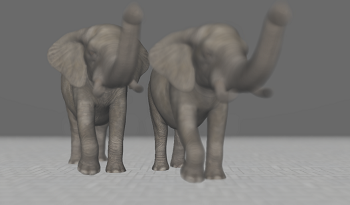
Light field displays have a finite angular and spatial resolution, which limits the displays depth-of-field, that is, the depth range around the display screen in which the display can visualize a 3D scene with the maximum spatial resolution. This limitation causes aliasing artifacts in the parts of the scene that are outside of that range, resulting in a distorted appearance. The aliasing artifacts can be mitigated by properly blurring those parts, with blurring preferably done at the rendering stage. Though methods for rendering a single view with a correct depth of field exist, using those methods for rendering a large light field is computationally heavy. In this paper we propose a method for simultaneously rendering multiple adjacent views in a light field, with each of them having the required depth of field. By means of examples, we show that the proposed method can render a desired light field several times faster than methods for rendering a single view, without compromising on the overall rendered quality.
Kamran Akbar, Robert Bregovic, "Depth-of-Field Guided Rendering For Light Field Displays" in Electronic Imaging, 2024, pp 367-1 - 367-6, https://doi.org/10.2352/EI.2024.36.10.IPAS-367
 Find this author on Google Scholar
Find this author on Google Scholar Find this author on PubMed
Find this author on PubMed